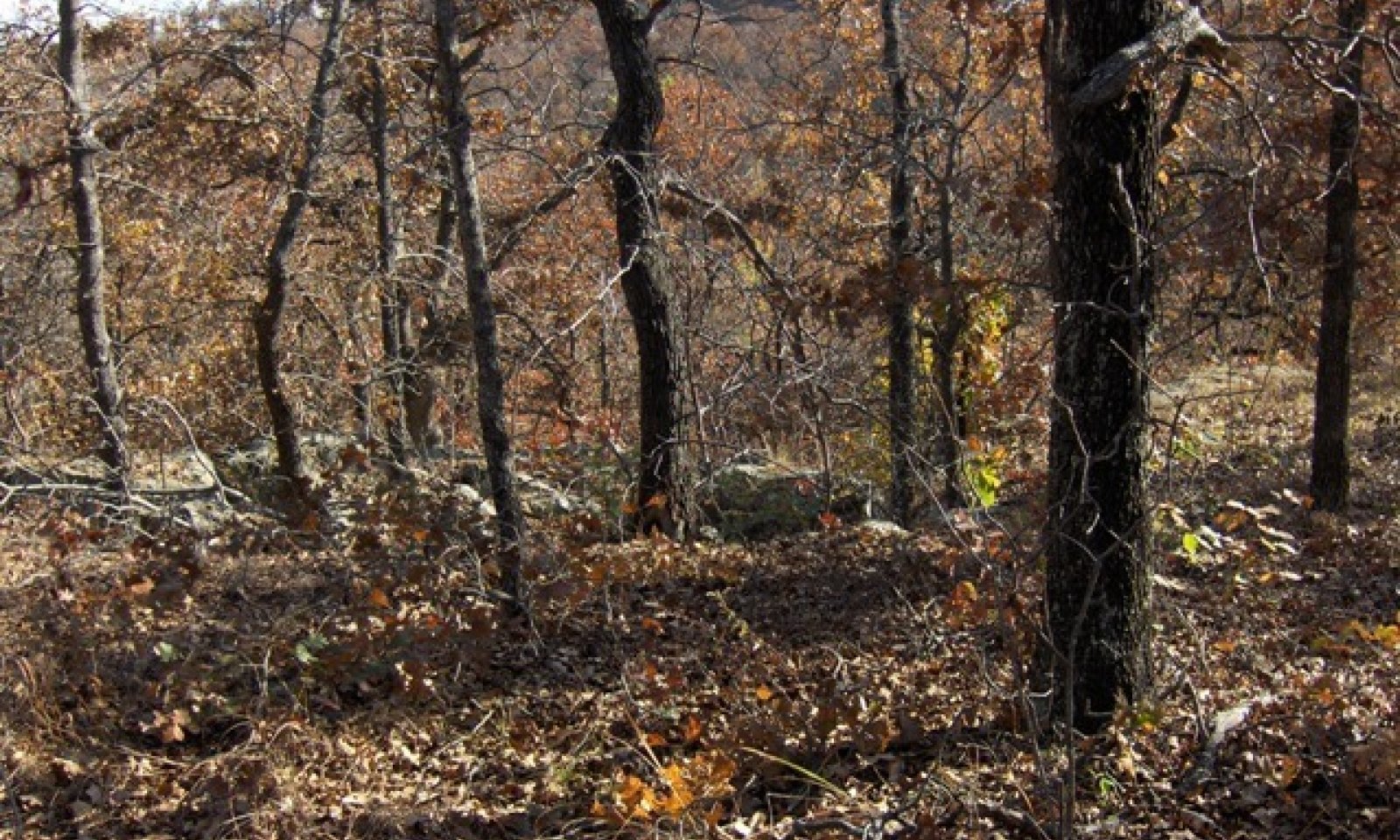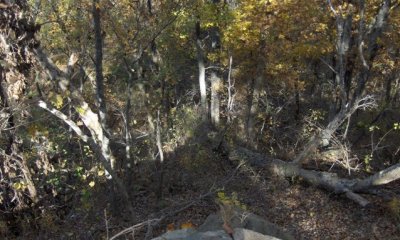
Savannah Breaks
Scenario model
Current ecosystem state
Select a state
Management practices/drivers
Select a transition or restoration pathway
-
Transition T1A
No fire
More details -
Restoration pathway R2A
Selective thinning, Prescribed fire
More details -
No transition or restoration pathway between the selected states has been described
Target ecosystem state
Select a state
Description
In reference condition, this site is a fire-driven climax of Oak savannah with a tall grass understory. Average woody canopy cover is below 60 percent. Surface rock from cobbles to boulders may be up to 25 percent. The composition by functional group production consists of 40 percent tall grasses, 25 percent mid grasses, and 10 percent forbs and legumes. Total average herbaceous production can range from 500 to 1,800 pounds per acre. Some juniper may occur depending upon the last fire or in areas protected from fire due to rock outcrops. Species composition can vary somewhat depending on the present soil resources and depth to bedrock.
Due to the slope and amount of surface rock, these sites are rarely grazed by domestic livestock. In some areas, the sites themselves are uses as natural barriers between pastures eliminating the need of traditional fences. There is some potential use by goats if they are adapted to utilizing such landscapes. However, numerous wildlife species may utilize these sites for bedding, foraging, and escape cover.
Characteristics and indicators
Post Oak & Blackjack Oak with understory of native tallgrass species.
<60% woody canopy
2-5 year fire return
Resilience management
In the absence of fire, mid-story woody species including elm, hackberry, and eastern redcedar, and greenbriar will begin to encroach into the sites and shade out understory species. This creates a risk of transition to the Woody Invasion State.
Submodel
Description
The description for this plant community is derived from analysis of limited field data and professional consensus of range trained individuals.
This state is the result of the removal of fire from the ecosystem. Without fire, some fire-intolerant woody species have been able to grow and reproduce unchecked. This has resulted in an increase in canopy coverage and hindered the growth of the herbaceous understory of the reference state.
The understory woody browse, forbs, and legumes cannot persist as the woody mid-story takes over. Thus much of the wild life habitat value declines as the site transitions to this state.
Much of the hydrologic cycle has changed as the functional plants are the woody overstory. Some rainfall is trapped in the foliage of the overstory and evaporates but some also reaches the soil via stem flow. Without the herbaceous understory, the sight may be prone to increased runoff from overland flow.
Characteristics and indicators
Oak/Hickory Woodland with Hackberry, Elm, and Juniper encroachment.
Shade tolerant herbaceous plants.
>60% woody canopy
>5 year fire return
Resilience management
Tools that restore the energy flow back to these plants and restore the hydrologic cycle include an integrated approach using brush management and fire. It is possible to restore this plant community to something similar to the reference plant community but may be very difficult depending on remnant seedstocks and time since fire.
Mechanism
In the absence of fire, mid-story woody species including elm, hackberry, and eastern redcedar, and greenbriar will begin to encroach into the sites and shade out understory species.
Constraints to recovery
This lack of fire or other brush management creates a risk of transition to the Woodland State.
Mechanism
Tools that restore the energy flow back to these plants and restore the hydrologic cycle include an integrated approach using brush management and fire. It is possible to restore this plant community to something similar to the reference plant community but may be very difficult depending on remnant seedstocks and time since fire.
Model keys
Briefcase
Add ecological sites and Major Land Resource Areas to your briefcase by clicking on the briefcase (![]() ) icon wherever it occurs. Drag and drop items to reorder. Cookies are used to store briefcase items between browsing sessions. Because of this, the number of items that can be added to your briefcase is limited, and briefcase items added on one device and browser cannot be accessed from another device or browser. Users who do not wish to place cookies on their devices should not use the briefcase tool. Briefcase cookies serve no other purpose than described here and are deleted whenever browsing history is cleared.
) icon wherever it occurs. Drag and drop items to reorder. Cookies are used to store briefcase items between browsing sessions. Because of this, the number of items that can be added to your briefcase is limited, and briefcase items added on one device and browser cannot be accessed from another device or browser. Users who do not wish to place cookies on their devices should not use the briefcase tool. Briefcase cookies serve no other purpose than described here and are deleted whenever browsing history is cleared.
Ecological sites
Major Land Resource Areas
The Ecosystem Dynamics Interpretive Tool is an information system framework developed by the USDA-ARS Jornada Experimental Range, USDA Natural Resources Conservation Service, and New Mexico State University.


